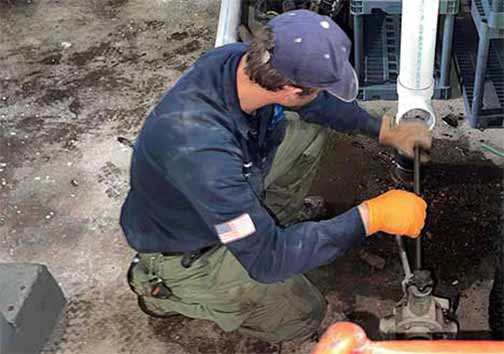
Main drain rodding is an essential maintenance task for homeowners and property managers. It involves clearing blockages and ensuring the smooth functioning of the drainage system. While many people understand the necessity of this task, few anticipate the unexpected costs and considerations that can arise during the process. Here we get into the financial aspects of main drain rodding, emphasizing the importance of thorough cost evaluation and planning.
The Importance of Regular Drain Maintenance
Regular maintenance of the main drain is crucial to prevent clogs and backups that can lead to severe water damage and costly repairs. A well-maintained drainage system ensures that wastewater is efficiently removed from the property, safeguarding the infrastructure and health of the inhabitants. Neglecting regular maintenance can result in unexpected emergencies that are both inconvenient and expensive.
Common Causes of Drain Blockages
Understanding the common causes of drain blockages can help homeowners take preventive measures. Accumulation of grease, hair, soap residue, and foreign objects are typical culprits. Tree roots can also infiltrate the drainage system, causing significant obstructions. Recognizing these causes allows for proactive measures, reducing the likelihood of costly interventions.
Unexpected Costs in Main Drain Rodding
While the initial cost of hiring a professional for drain rodding service may seem straightforward, several unexpected expenses can arise. These include emergency service fees, additional repairs needed due to underlying issues, and costs related to advanced equipment or technology required for complex blockages. Homeowners should be prepared for these potential expenses and budget accordingly.
Evaluating Service Provider Costs
Choosing the right service provider is critical in managing drain maintenance costs. It’s essential to compare quotes from multiple providers, considering factors such as experience, reputation, and service guarantees. While opting for the cheapest service may seem appealing, it can sometimes lead to inadequate work that necessitates further interventions, ultimately increasing costs.
Long-term Financial Considerations
Investing in regular drain maintenance can save money in the long run. While the upfront cost may be a concern, the prevention of major drain issues can avoid extensive repairs and replacements. Additionally, regular maintenance can extend the lifespan of the drainage system, providing financial relief over time.
DIY Drain Maintenance: Pros and Cons
For those looking to save money, DIY drain maintenance might be an option. However, it’s crucial to weigh the pros and cons. While DIY methods can be cost-effective, they require a certain level of expertise and can sometimes exacerbate the problem if not done correctly. Homeowners must consider their skill level and the complexity of the blockage before attempting DIY solutions.
Environmental Impact of Drain Maintenance
Drain maintenance doesn’t only have financial implications; it also affects the environment. Using eco-friendly products and methods can minimize harm to the surrounding ecosystem. Homeowners should inquire about the environmental practices of their service providers and opt for sustainable solutions whenever possible.
Preparing for Future Drain Maintenance Costs
To mitigate unexpected costs, homeowners should plan for future drain maintenance expenses. Setting aside a budget for regular inspections and cleanings can prevent financial strain. Additionally, understanding the age and condition of the drainage system can help anticipate potential issues and allocate funds accordingly.
Exploring Technological Advancements in Drain Rodding
As technology advances, so do the methods and tools used in drain rodding. Modern equipment such as high-pressure hydro jetting, sewer line cameras for inspection, and robotic cutters have revolutionized the way blockages are dealt with. These tools can significantly increase the efficiency and effectiveness of drain maintenance, but they also come with additional costs. Homeowners should be aware of these technological options and consider their benefits versus their costs when planning maintenance.
Insurance and Main Drain Rodding: What You Need to Know
Insurance can play a critical role in managing the costs associated with main drain rodding. Some homeowners’ insurance policies cover certain aspects of drain maintenance and repairs, but it’s essential to understand the specifics of your coverage. Reviewing your policy and discussing with your insurance provider can help you determine what is covered and what isn’t, potentially saving you from unexpected expenses.
Community Resources and Support for Drain Maintenance
Many communities offer resources and support for homeowners dealing with drain maintenance issues. Local government programs, community workshops, or online forums can provide valuable information and assistance. Engaging with these resources can help homeowners stay informed about best practices and cost-saving strategies for drain maintenance.
Final Thoughts on Main Drain Rodding and Financial Planning
In summary, main drain rodding is not just a technical task but also a financial consideration for homeowners. By understanding the unexpected costs and considerations involved, individuals can better manage their budgets and maintain the health of their drainage systems. Thorough cost evaluation, regular maintenance, and informed decision-making are key to avoiding unexpected expenses and ensuring the longevity of your property’s drainage infrastructure.

